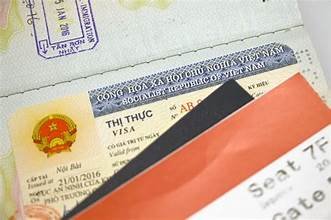The Fourth of July—America’s Independence Day—is a holiday rich with tradition. From booming fireworks lighting up the night sky to family gatherings, parades, and baseball games, it’s a day that embodies patriotism and community. Over the years, Google Doodles have added a unique, digital layer to this celebration. By transforming the iconic Google logo into festive art, animations, and even interactive games, these Doodles have become part of how millions experience Independence Day online.
This article takes you on a journey through the history of Fourth of July Google Doodles, exploring how they evolved from simple patriotic designs to engaging, interactive experiences like the beloved baseball game. We’ll uncover the symbolism behind the artwork, highlight key examples, and explain why these Doodles matter more than just a homepage makeover.
What Makes Google Doodles Special?
Google Doodles are more than playful logos—they are cultural storytellers.
- Origins: The very first Doodle appeared in 1998, when Google’s founders placed a Burning Man stick figure behind the second “O” in the logo to show they were away.
- Growth: Since then, thousands of Doodles have celebrated everything from historical anniversaries to global sporting events.
- Impact: For holidays like Independence Day, these Doodles offer both recognition and education, reminding users of traditions while sparking curiosity to learn more.
By blending art, history, and interactivity, Google Doodles provide a global platform to showcase what July 4th represents to Americans.
Early Years: Fireworks and Flags
Simple Beginnings (2000–2005)
In the early 2000s, Fourth of July Doodles were straightforward yet effective. They leaned heavily on patriotic symbols like the American flag, fireworks, and red-white-and-blue motifs.
- 2000: One of the earliest Independence Day Doodles displayed the American flag waving proudly within the Google logo.
- 2002–2004: Fireworks exploding behind the letters became a recurring theme, reflecting the holiday’s most iconic tradition.
These designs were minimalist but carried the unmistakable spirit of July 4th. For many users, it was the first time a search engine homepage actively acknowledged a holiday in such a visual way.
Experimenting With Festivity (2006–2010)
As Google’s design team gained confidence, Independence Day Doodles began incorporating humor and cultural details.
- 2007: A Doodle showed colorful fireworks bursting over the U.S. Capitol, blending patriotism with Washington D.C.’s historic symbolism.
- 2010: A picnic table filled with hamburgers, hot dogs, and soda—classic American summer foods—took center stage.
These designs connected with users on a more personal level, reminding them that Independence Day wasn’t just about history—it was about shared experiences like food, family, and fireworks.
Mid-Evolution: Creativity Meets Culture
Cultural Storytelling (2011–2015)
During this period, Doodles became more refined, balancing simplicity with cultural storytelling.
- 2011: A vintage postcard–style Doodle used sepia tones to honor America’s past, subtly connecting to the holiday’s historical roots.
- 2013–2015: Animations were introduced, with sparklers, flags, and festive scenes that felt more immersive than static designs.
These Doodles began to reflect the diversity of July 4th traditions, from formal patriotic ceremonies to backyard barbecues.
Embracing Technology (2016–2018)
As technology advanced, so did the Doodles. Designers began experimenting with more sophisticated animations and interactive elements.
- 2016: Fireworks animations added motion and excitement, mirroring real-life celebrations.
- 2018: Google leaned into playful imagery, like picnic spreads and baseball motifs, to reflect summertime Americana.
By this point, Doodles had transformed from static holiday greetings into digital celebrations in their own right.
The Landmark Baseball Doodle of 2019
No discussion of Independence Day Doodles would be complete without spotlighting the 2019 Google Doodle Baseball Game. Released on July 4, it remains one of the most iconic interactive Doodles ever.
Gameplay Overview
Players stepped up to the plate as quirky food characters—hot dogs, hamburgers, french fries—while facing off against peanut pitchers. The goal? Hit the ball and rack up as many runs as possible before striking out. Fireworks and cheers erupted with every home run.
Cultural Significance
This Doodle struck the perfect chord:
- Baseball as America’s pastime. The sport is deeply connected to Independence Day celebrations.
- Food characters. Hot dogs, burgers, and popcorn symbolize classic ballpark and holiday snacks.
- Patriotic design. Fireworks and red-white-and-blue visuals tied the game back to July 4th traditions.
Global Popularity
The baseball game went viral. Players around the world shared high scores on forums and social media. Many described it as addictive, entertaining, and surprisingly nostalgic.
Want to replay it? You still can! Check out this guide on how to play Google Doodle Baseball anytime for step-by-step access and gameplay tips.
Beyond Baseball: Modern Fourth of July Doodles
Continued Interactivity (2020–2023)
After the baseball game’s success, Google continued leaning into interactive and animated Doodles for Independence Day.
- 2020: Animated fireworks exploded in sync with patriotic tunes.
- 2021–2023: Designs focused on inclusivity and diverse celebrations, highlighting that Independence Day means different things to different communities.
These Doodles reminded users that traditions evolve, and so does the way we celebrate them online.
Nostalgia Meets Replayability
One of the most exciting aspects of Google Doodles is their replayability. Through the Google Doodles Archive, users can revisit older designs and games. Independence Day Doodles—especially the 2019 baseball game—continue to attract visitors years later.
For gaming enthusiasts and cultural explorers alike, resources like Game Insider Hub provide a deeper dive into Doodles’ gaming side, offering strategies, insights, and context.
The Symbolism Behind Fourth of July Doodles
Fireworks: Freedom and Celebration
Fireworks have been a staple of July 4th since 1777, when they were first used to mark Independence Day in Philadelphia. By incorporating them into Doodles, Google taps into the universal excitement and pride associated with the holiday.
Baseball: Unity and Tradition
Baseball is often called “America’s pastime,” and few things feel more American than a Fourth of July ballgame. By transforming baseball into a playable Doodle, Google cemented its place in digital cultural history.
Food and Family: Shared Experiences
From burgers on the grill to popcorn in the stands, food plays a central role in July 4th. Doodles that showcase these foods do more than amuse—they connect to the communal aspect of celebration.
Why These Doodles Matter
Cultural Connection
Independence Day Doodles remind Americans—and introduce global users—to what July 4th represents: freedom, unity, and community.
Digital Nostalgia
For many, these Doodles evoke nostalgia. Parents and children playing the baseball game together in 2019 created memories that go beyond the screen.
Global Curiosity
Because Google operates globally, Fourth of July Doodles expose international audiences to American culture. It’s a form of digital cultural exchange, where the world gets a glimpse into how the U.S. celebrates independence.
Case Study: The Legacy of the 2019 Baseball Doodle
The baseball doodle continues to stand out as a case study in effective digital engagement:
- Mass participation: Millions played the game on launch day.
- Replay value: It remains accessible through Google’s archive.
- Cultural accuracy: Baseball, food, and fireworks together captured the essence of July 4th.
Its success proved that Doodles could be more than symbolic—they could become interactive cultural artifacts.
Looking Ahead: The Future of Independence Day Doodles
What might the next decade of July 4th Doodles bring? Some possibilities include:
- Augmented reality fireworks: Letting users project Doodle fireworks in their surroundings via smartphone.
- Multiplayer games: A chance for families and friends to compete together, even remotely.
- AI personalization: Doodles adapting to users’ regions, showing local July 4th traditions.
Whatever direction Google takes, the underlying mission will remain: celebrating freedom, unity, and joy in creative ways.
Conclusion
From fireworks to baseball, Google Doodles have transformed how we celebrate Independence Day online. What began as simple patriotic imagery has evolved into immersive, interactive experiences that capture the essence of the holiday.
Key highlights:
- Early Doodles showcased flags and fireworks.
- Mid-era designs embraced food, culture, and animations.
- The 2019 baseball game remains a cultural landmark.
- Modern Doodles focus on inclusivity, interactivity, and replayability.
These Doodles matter because they don’t just reflect Independence Day—they actively shape how people around the world experience and remember it.
So next Fourth of July, when you open Google and see a festive Doodle, take a moment to click, play, and celebrate. You’ll be participating in a digital tradition that blends history, culture, and community in one delightful package.



